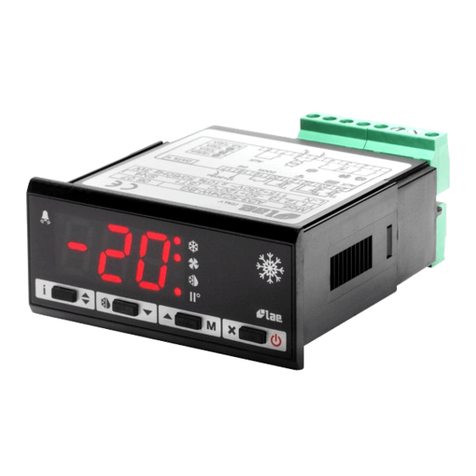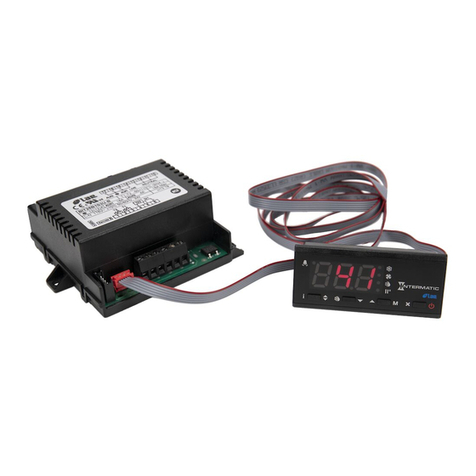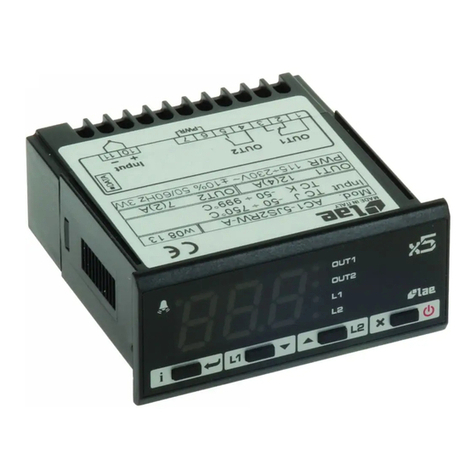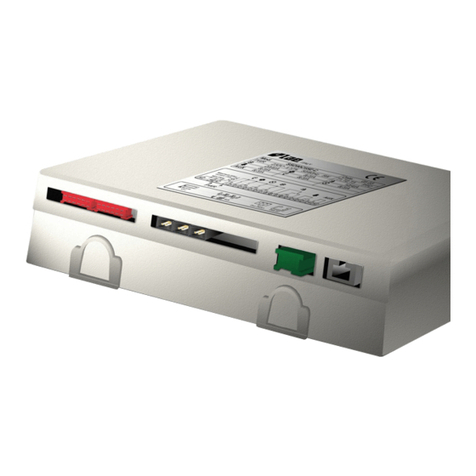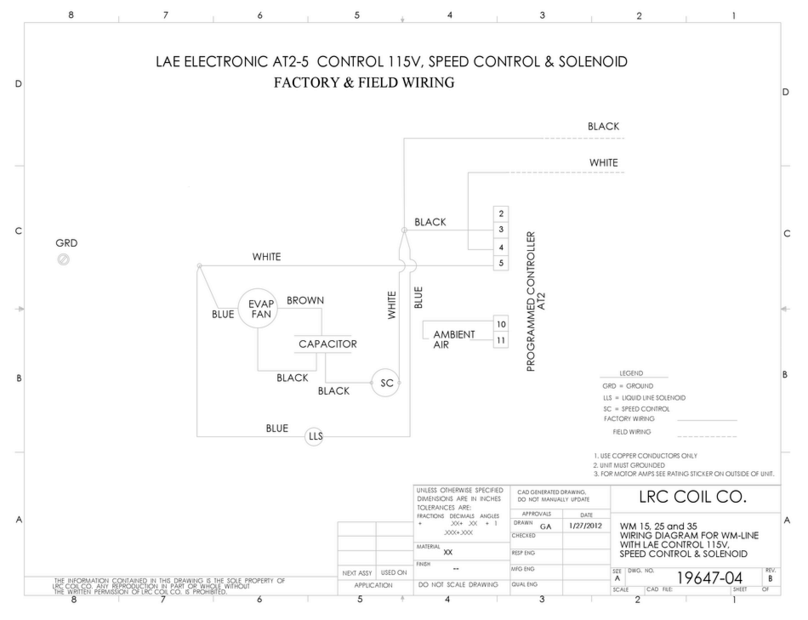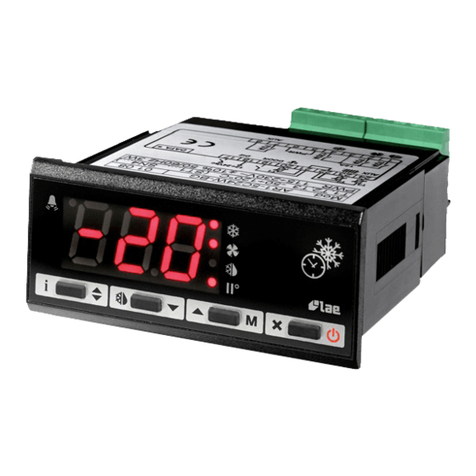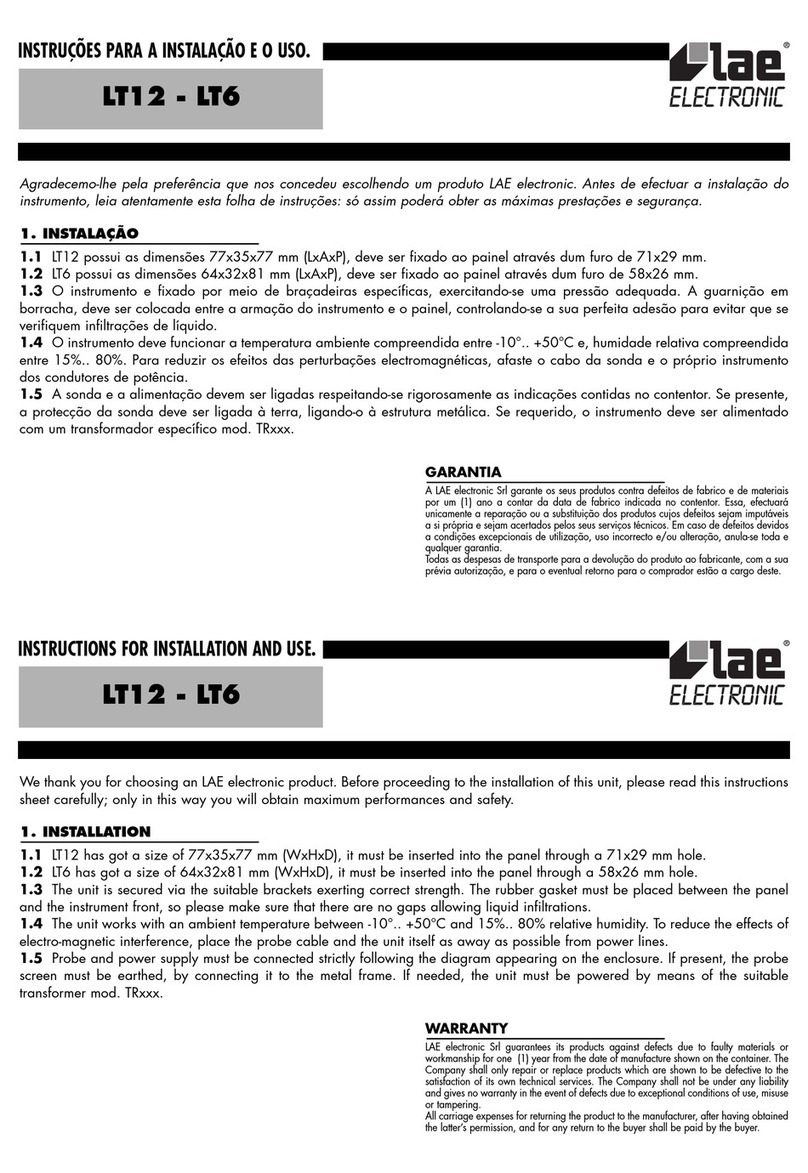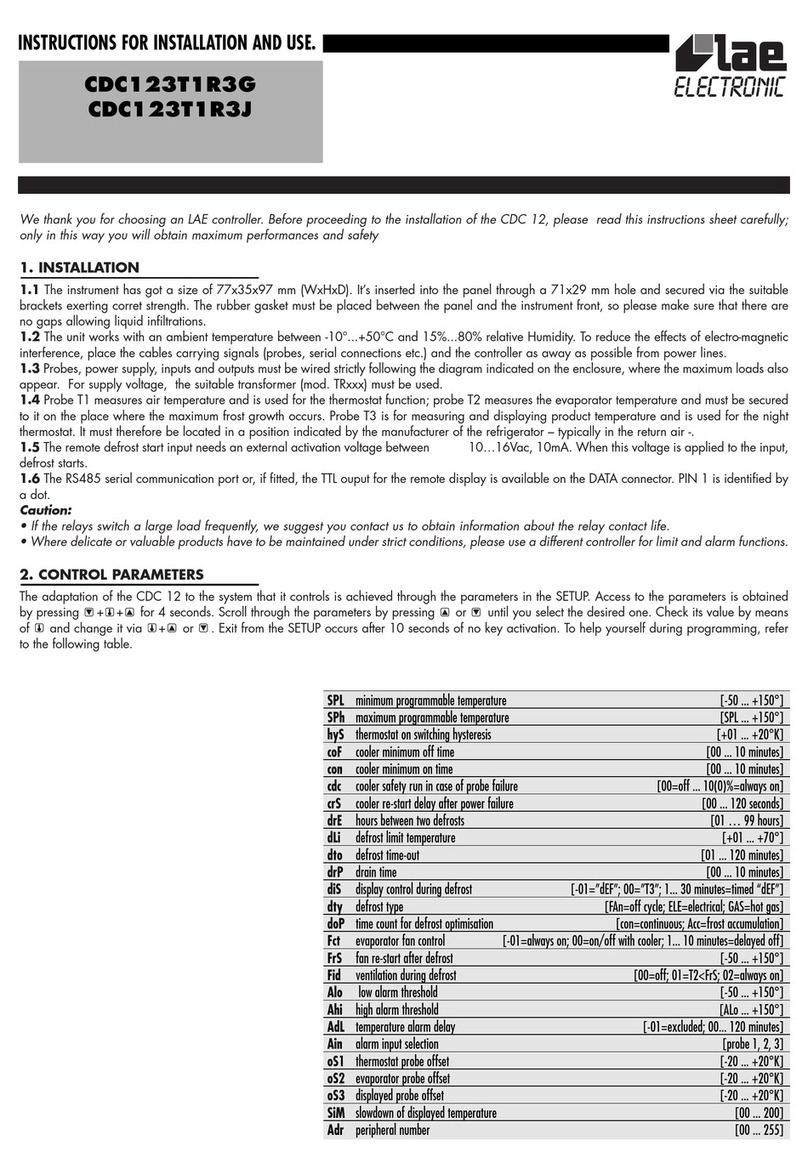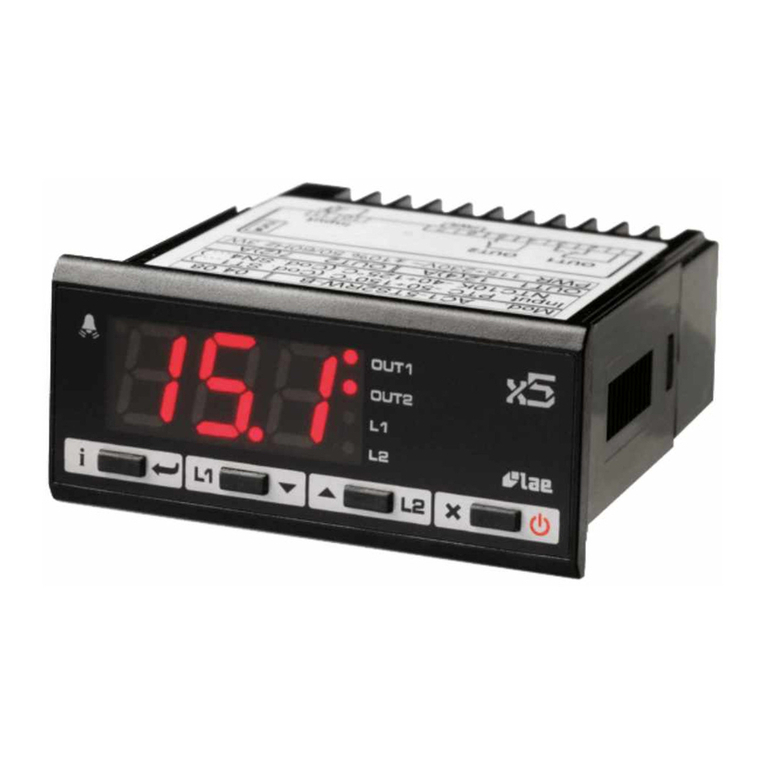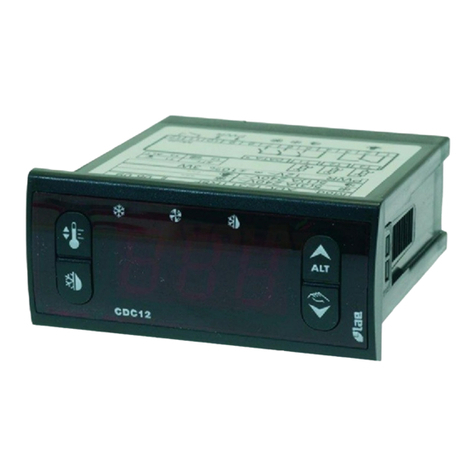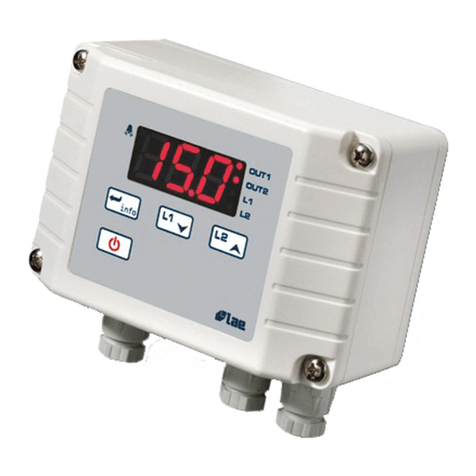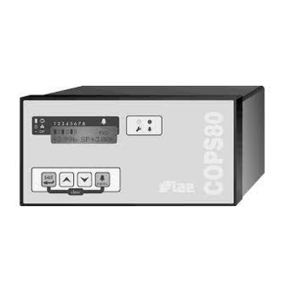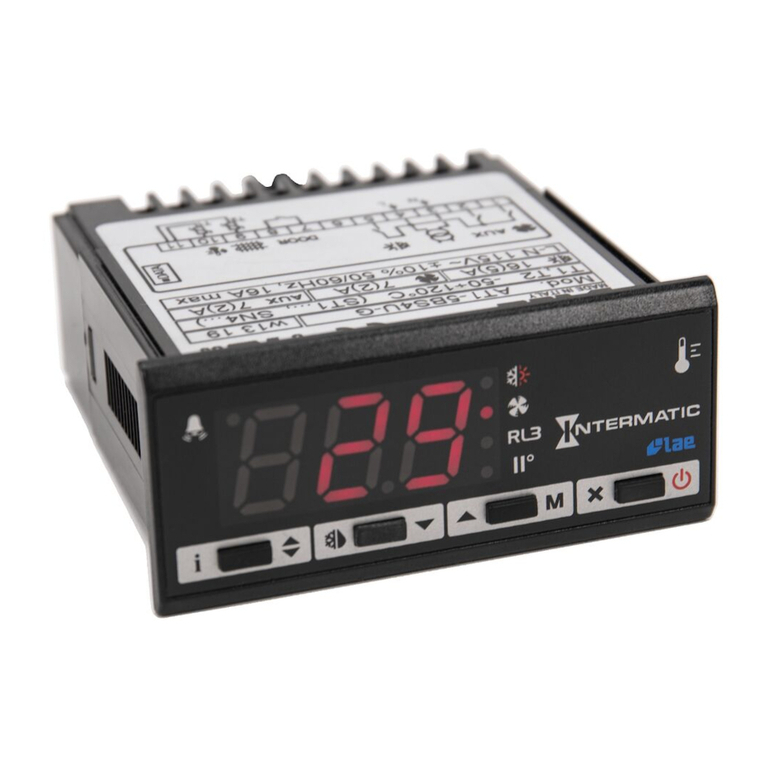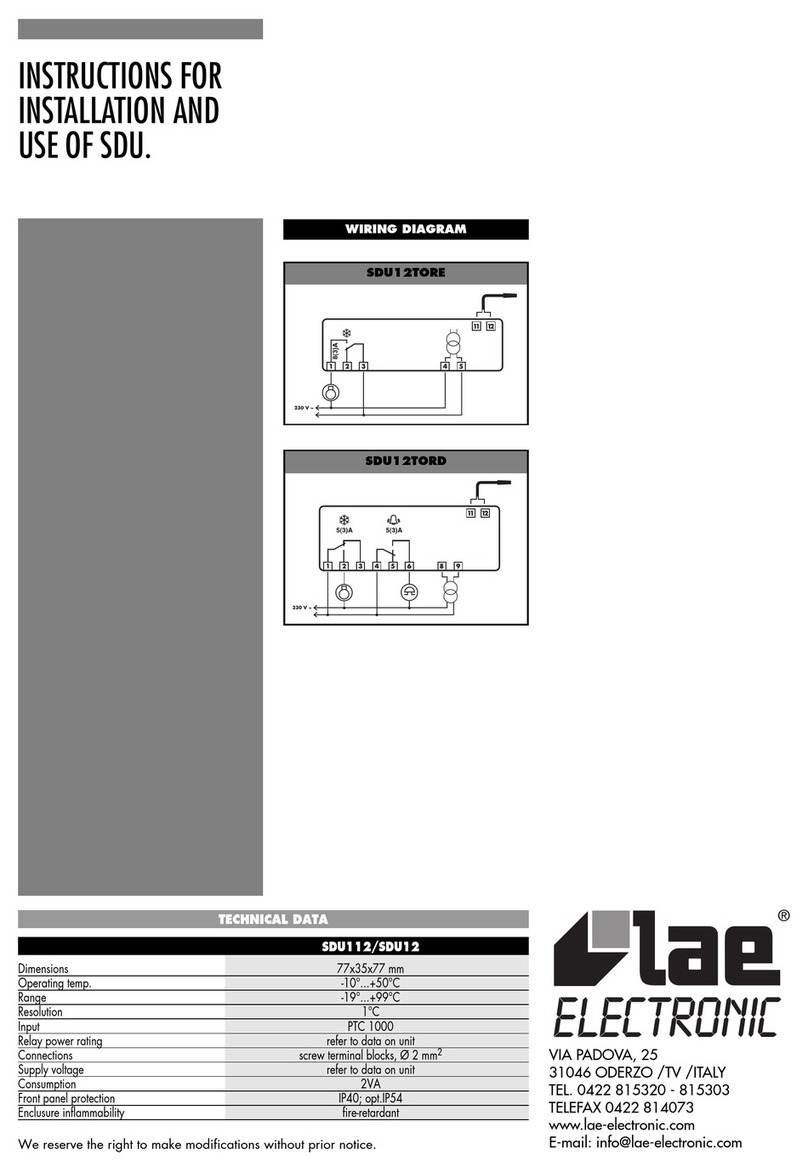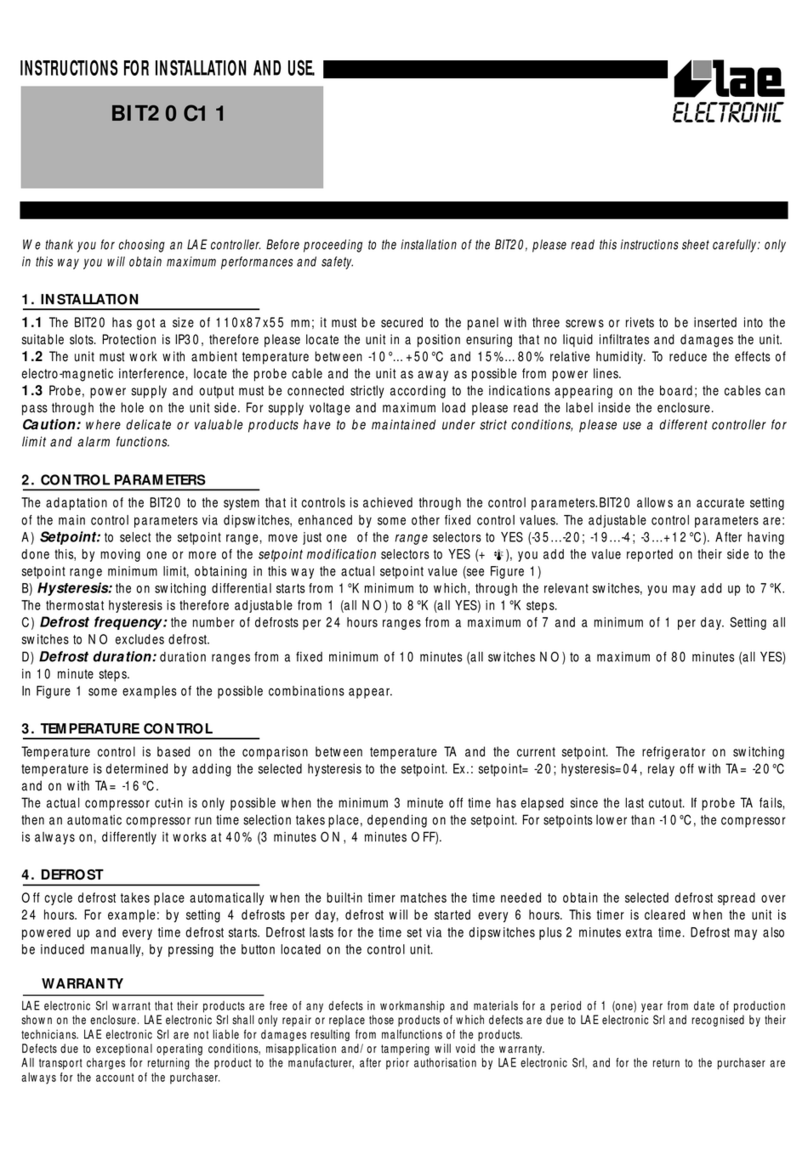temperature. The slowdown is proportionated to the value programmed to SiM (ex.: 100 simulates approx. a 0.5 l bottle of water). To display the
instantaneous temperatures T1, T2 or T3 press , or respectively.
3.2 D
URING DEFROST
. The display is controlled according to the parameter diS, if 00 temperature T3 continues to be displayed. If diS= -01, then
the display shows "dEF" since defrost start as long as the temperature T1 is higher than setpoint+hysteresis hyS. By programming a value between
1and 30 min., after the defrost "dEF" is still displayed until the time programmed has elapsed unless the above condition is reached before.
3.3 O
THER
D
ISPLAY
S
TATUS
. During an alarm condition, “ALM” blinks on display. The stand-by status, in which all outputs are off, is signalled with
permanent "---". If the keypad has been locked through the serial communication, when attempting to perform any changes, the display shows “inh”.
The optional remote display (CDCREMOTO) repeats the indications of the RDC12 to which it’s connected, except during the alarms which are
indicated with "---". When a fault in communication occurs, the remote unit shows "..-.." (only the line in the centre).
4. THERMOSTAT FUNCTION
At power-up the cooler start is delayed by the sum of coF and crS; this latter is used in those applications where it is necessary, after a line dropout,
to avoid simultaneous starts of many compressors at the power-up. For ex.: coF= 03, crS= 05; after power-up, at least 03 minutes and 05 seconds
must elapse before the cooler starts. coF and con are, respectively, the cooler minimum off and on time. The relay which controls the cooler, after
switching off/on or on/off, will remain in that status for at least the pre-programmed time. When you have to maintain a very small hysteresis hyS,
we recommend to program a suitable value for coF and con to ensure a long life to relay/contactor and compressor.
4.1 M
AIN
T
HERMOSTAT
: this control is based on the comparison between temperature T1, the main setpoint and the hysteresis hyS programmed.
The setpoint is displayed by pressing . To change it, keep pressed and by pushing key or , select the desired value within the limits SPL
and SPh. The cooler on switching temperature is achieved by adding hyS to the setpoint.
Ex.: setpoint=-03°; hyS=04°K, the relay is off with T1=-03°C and on with T1=+01°C.
When a failure or overrange of probe T1 occurs, the cooler run isn't controlled according to setpoint but determined by cdc which represents the
cooler duty cycle, i.e. (on time)/(10 minute cycle). For ex.: 04= 4 minutes on time, 6 minutes off time. The cdc value has to be set taking into
consideration the normal cooler duty cycle.
4.2 N
IGHT
T
HERMOSTAT
: temperature control with alternative parameters aims at avoiding an excessive temperature decrease in positive refrigerated
counters in the event that, during the night, a thermal load reduction takes place (counter closing).
You have access to the night parameters by keeping + pressed for 4 sec. The parameter is selected by pressing or ; the current value is
displayed by pressing , change it via + or . Exit from the alternative setting occurs after 10 sec. of no key activation. The alternative
parameters are:
If enabled, the night thermostat starts to work by stopping the cooler when temperature T3 goes down to the ASP value, regardless of temperature
T1. Cooler restart takes place when T3 equals ASP+Ahy; if temperature goes over this threshold, the MAIN THERMOSTAT control is resumed.
Ex.: AEn= 01; ASP= 05°; Ahy= 02°K; the relay is off with T3=+05° and on at +07°, when T3=+08° the main setpoint has priority again on
temperature control.
During the night function coF and con are however active.
If you wish to switch off the outputs, you can put the RDC12 on a standby via the serial communication or manually, by pressing + + during
self-check following the power-up. During the standby temperature measurement and serial communication however remain active. If the RDC12 is
on a standby, you can get it to go out of this status and resume its ordinary operation by following the same procedure as described above .
5. DEFROST SETTINGS
Defrost is started when the real time, kept by the internal clock, matches one of the 6 scheduled times.
You have got access to clock and defrost times by keeping + pressed for 4 seconds. To move from one value to the next/previous, press /
. To display it press , change it by pressing + or .
5.1 C
LOCK
P
ROGRAMMING
. To set the minutes of the real time, select Min and press + or . As to the hours, select hrS and proceed as above.
The clock programming range is from 00:00 to 23:59. Be careful if clock programming takes place at the end of an hour (10:59:59 - 11:00:00), if
necessary check the clock again before you go further.
The real time is kept even in case of a power failure for a minimum of 5 days, typically 20 days.
5.2 D
EFROST
P
ROGRAMMING
. The six defrost start times are identified by the mnemonic dh1... dh6. The time is adjustable in hours and tens of
minutes i.e. 072 and 130 correspond to 7:20 and 13:00. The times assigned to dh1... dh6 do not need to be sequential.
If you want to eliminate one or more defrosts, simply program 240.
Two or more defrosts with time difference smaller or equal to 10 minutes are considered as one defrost. Ex.: dh1=073, dh2=073, dh3=074 there
will be one defrost only at 7:30.
The defrost start times are stored in a non-volatile memory and therefore they are not lost in case of a black-out.
5.3 M
ANUAL
D
EFROST
. It is possible to manually start or abort defrost by pushing + .
6. DEFROST FUNCTION
6.1 E
VAPORATOR
H
EATING
. During defrost the status of the outputs is determined by parameter dty. If dty=Fan, then the evaporator fans are kept
INSTRUCTIONS FOR INSTALLATION AND USE.
AEn alternate night thermostat control [01=enabled; 00=inhibited]
ASP alternate setpoint [-50 … +150°]
Ahy night thermostat on switching hysteresis [+01 … +20°K]
